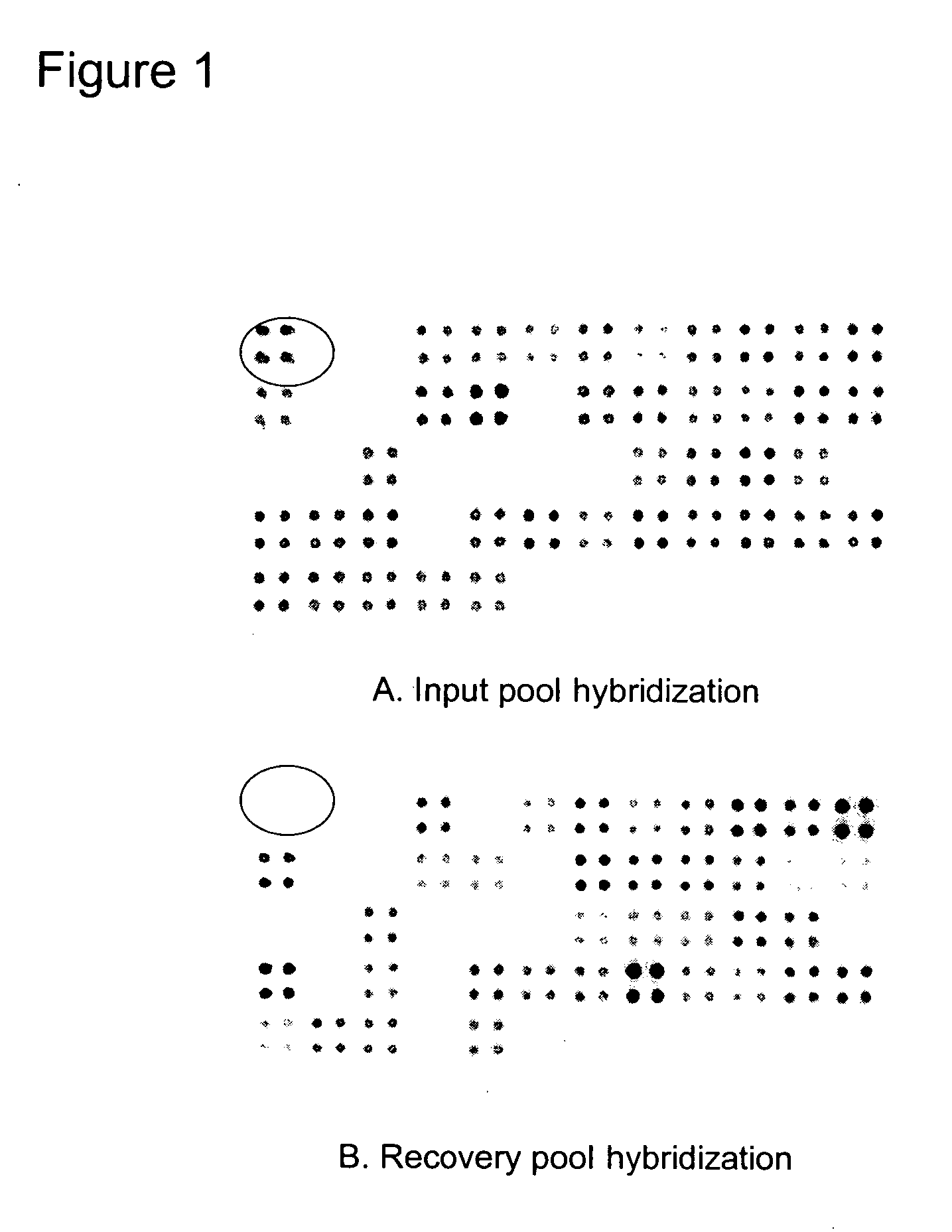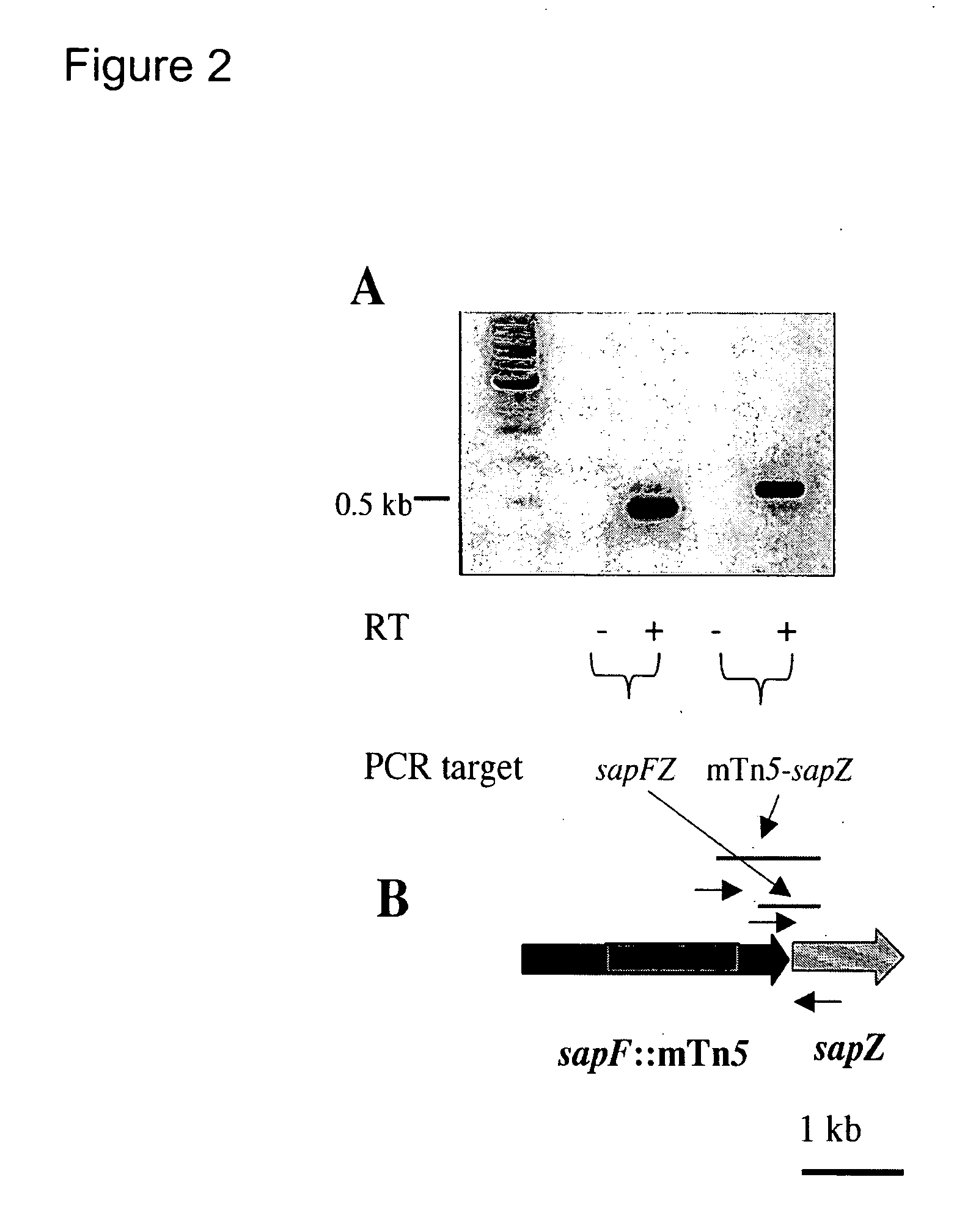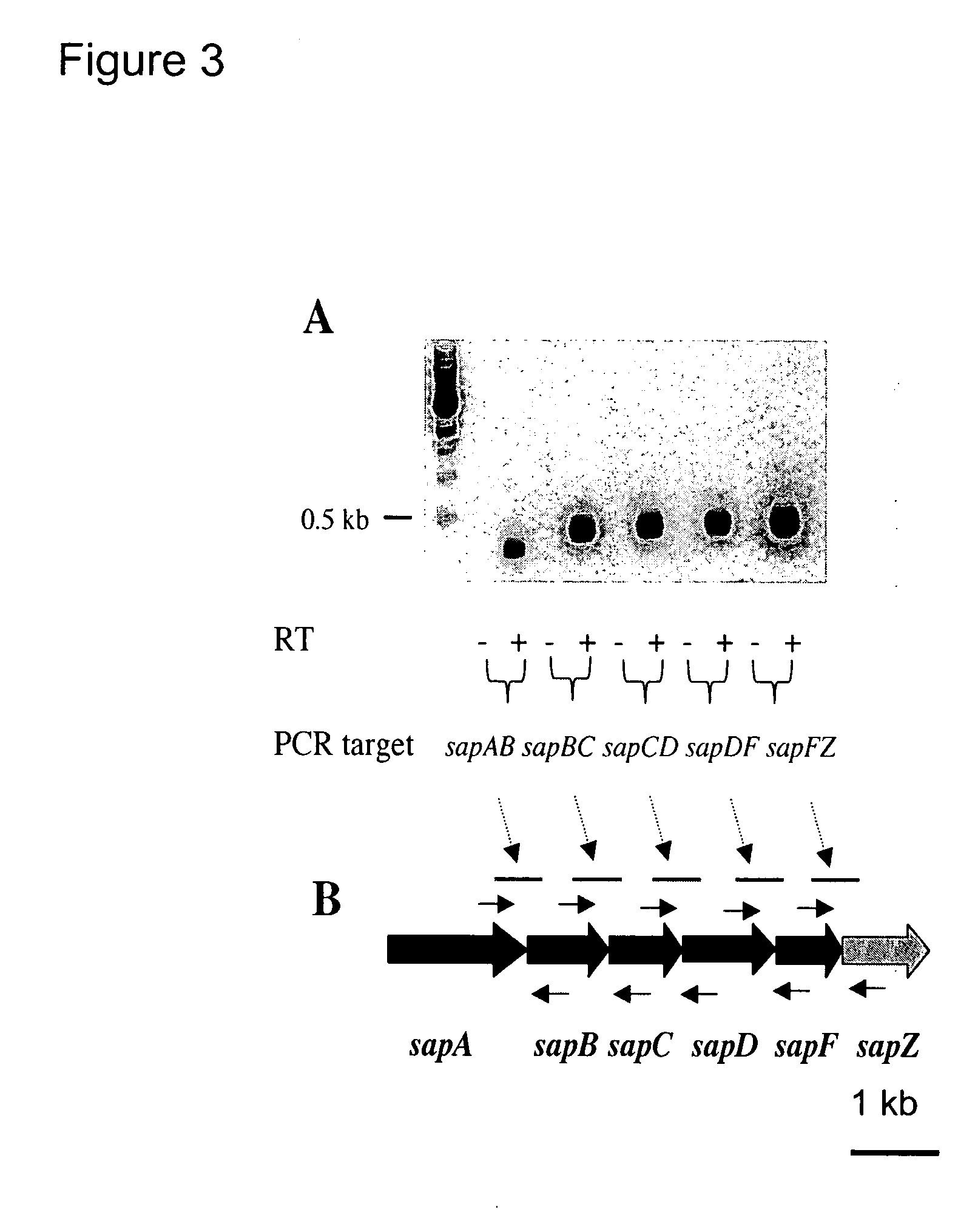Nontypeable haemophilus influenzae virulence factors
a technology of haemophilus influenzae and virulence factors, which is applied in the field of non-typeable haemophilus influenzae virulence factors, can solve the problems inability to understand the pathogenesis of nthi-induced middle ear disease, and too much criticism, so as to prolong the presence of peptide-like therapeutic agents, increase the use of pharmaceutical arts, and accelerate the breakdown or denaturation.
- Summary
- Abstract
- Description
- Claims
- Application Information
AI Technical Summary
Benefits of technology
Problems solved by technology
Method used
Image
Examples
example 1
Construction of the STM Library
[0091] An attenuated NTHi mutant was identified by signature-tagged mutagenesis (STM) using the transbullar chinchilla model of OM. The NTHi, strain 86-028NP, was mutagenized by miniTn5 transposons marked with unique signature tags to construct an STM library. A panel of signature-tagged miniTn5 transposons was constructed by cloning an EcoRI cassette containing the Tn903 kanamycin resistance gene into the EcoRI site and a signature tag sequence into the KpnI site within the transposon of the Epicentre EZ::TN pMOD Transposon Construction Vector. To ensure that the signature tag sequences give a strong hybridization signal and do not cross hybridize to other tags, the signature tag sequences were screened by dot blot hybridization. To adapt the Epicentre miniTn5 in vitro transposition mutagenesis system to strain 86-028NP, single stranded gaps generated by the transposase in the chromosomal DNA were repaired using DNA polymerase and ligase. The transpos...
example 2
Characterization of the Attenuated A1 Clone
[0094] Sequence analysis was carried out on the transposon interrupted DNA locus in the attenuated strain using standard methods in the art. Southern blot analysis showed that a 6 kb EcoRV restricted genomic DNA fragment of the mutant of interest contained the transposon interrupted gene. The EcoRV restricted genomic DNA fragments were cloned into the pBluescript plasmid, and the transposon containing clone, designated pBlueA1, was isolated using marker rescue from LB agar plates supplemented with kanamycin. The 6 kb insert of the pBlueA1plasmid was sequenced and the resulting DNA sequence data were searched against NCBI databases using the BLASTX and BLASTN algorithms. Contigs were assembled using SeqmanII software (DNASTAR Inc.). As shown in FIG. 2, sequence analysis indicated that the transposon was inserted 165 bp from the 3'-end of the sapF gene, thus this attenuated mutant was designated as "sapF::mTn5." The coding sequence of the kan...
example 3
In vitro Phenotypic Characterization of the sapF::mTn5 Mutant
[0099] To ensure no secondary mutation in the original sapF::mTn5 mutant contributed to the various phenotypes of this mutant, the parent strain 86-028NP was transformed with the 6 kb EcoRV fragment containing the sapF::mTn5 allele from the pBlueA1 plasmid. The wild type sapF gene was replaced in this strain by homologous recombination with the sapF::mTn5 allele. One Km resistant clone was confirmed to harbor a miniTn5 interrupted sapF gene by PCR and Southern blot analysis. This clone was further characterized together with the sapF::mTn5 strain and designated RcsapF::mTn5.
[0100] Since the sap mutants of S. typhimurium and E. chrysanthemi were reported to be hypersensitive to certain antimicrobial peptides, sensitivity to several commercial available cationic peptides against the NTHi parent and the sapF mutant strains was analyzed. Protamine displayed differential killing effect on the sapF mutants comparing to the paren...
PUM
| Property | Measurement | Unit |
|---|---|---|
| molecular weights | aaaaa | aaaaa |
| molecular weights | aaaaa | aaaaa |
| molecular mass | aaaaa | aaaaa |
Abstract
Description
Claims
Application Information
 Login to View More
Login to View More - R&D
- Intellectual Property
- Life Sciences
- Materials
- Tech Scout
- Unparalleled Data Quality
- Higher Quality Content
- 60% Fewer Hallucinations
Browse by: Latest US Patents, China's latest patents, Technical Efficacy Thesaurus, Application Domain, Technology Topic, Popular Technical Reports.
© 2025 PatSnap. All rights reserved.Legal|Privacy policy|Modern Slavery Act Transparency Statement|Sitemap|About US| Contact US: help@patsnap.com



